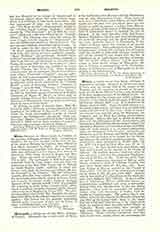

Miletus, a titular see of Asia Minor, suffragan of Aphrodisias, in Caria. Situated on the western coast of Caria near the Latmic Gulf at the mouth of the Mseander and the terminus of several of the great roads of Asia Minor, Miletus was for a long period one of the most prosperous cities of the ancient world. At first inhabited by the Leleges and called Lelegeis or Pityussa, it was rebuilt under the name of Miletus by the Cretans (Strabo, XIV, i, 3). It is mentioned by Homer (Iliad, II, 868). About the tenth century B.C. the Ionians occupied it, and made it a maritime and commercial power of the first rank. From it numerous colonies were founded along the Hellespont, the Propontis, and the Black Sea, among others Cyzicus and Sinope. Miletus also had its period of literary glory with the philosophers Thales, Anaximander, and Anaximenes, the historians Hecata us and Cadmus, the rhetorician Aeschines, and the writer of tales, Aristides. After the sixth century B.C., it passed successively under the domination of the Persians, Alexander, the Seleucides, and the Romans, and finally lost its splendor to such an extent as to become for the Greeks and Romans the symbol of vanished prosperity. It is, nevertheless, often mentioned by Strabo (XII, viii, 16; XIV, i, 3, 6) and by Pliny (Hist. nat., IV, xi; V, xxxii etc.). St. Paul landed there from Samos, and there bade farewell to the ancients of the Church of Ephesus. On another occasion, doubtless after his first captivity, he left here his companion Trophimus, who was ill (II Tim., iv, 20). In the Acts of St. Thyrsus and his companions, martyred at Miletus under Decius, mention is made of a Bishop Csesarius who gave them burial (Acta SS., III, January, 423). Eusebius, Bishop of Miletus, assisted at the Council of Nicaea (325). For the list of the other known bishops see Le Quien (I, 917-20) and Gams (448). Mention may be here made of St. Nicephorus in the tenth century (Anal. Bolland., XIV, 129-66). At first a suffragan of Aphrodisias, Miletus afterwards became an autocephalous archdiocese and even a metropolis. Among those who brought fame to the city during Byzantine times must be mentioned the architect Isidore, who, with Anthemius of Tralles, built St. Sophia at Constantinople. The ancient city is now buried under the alluvium of the Mander, which has also filled up the Latmic Gulf. Near its site, about four and a half miles from the sea, is the village which since the medieval times has been called Palatia or Palatscha. Recent excavations have brought to light other ruins, the remains of a temple of Apollo Didymieus. Greek Christian inscriptions have also been found there, among others one mentioning the martyr Onesippus, and another, probably of the fourth century, containing an invocation to the seven archangels, guardians of the city (Corp. inscr. gr., 2892, 8847).
S. SALAVILLE

